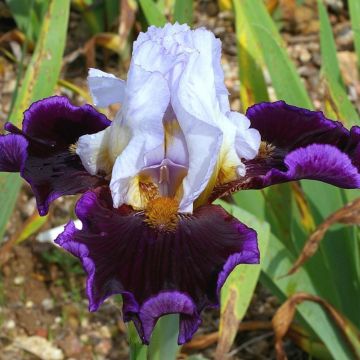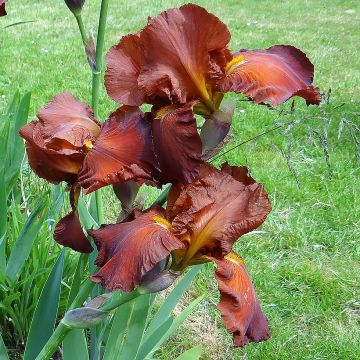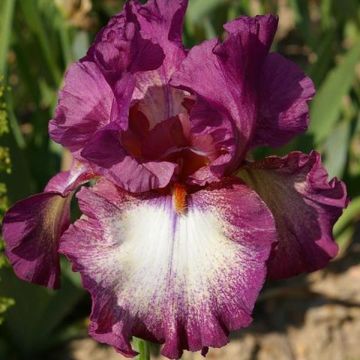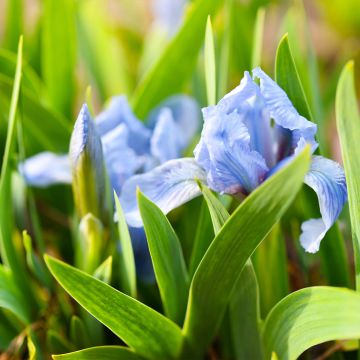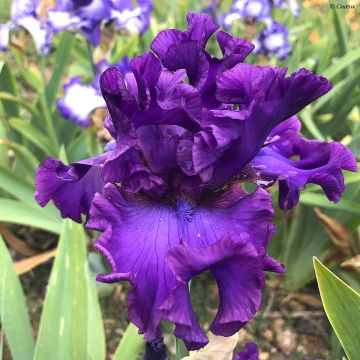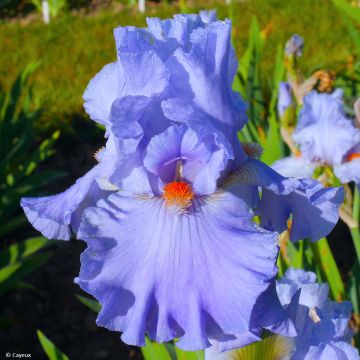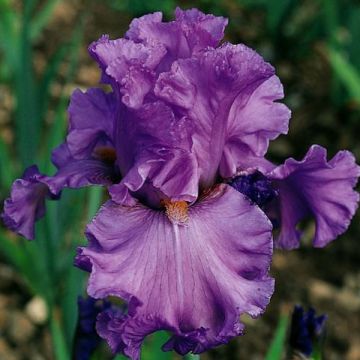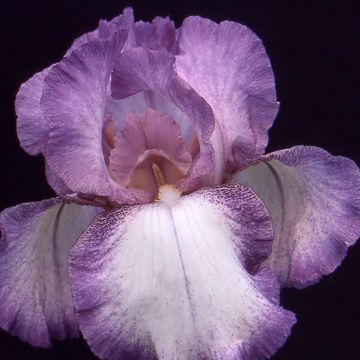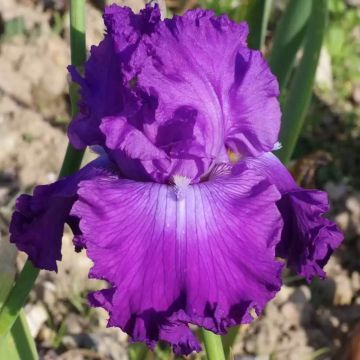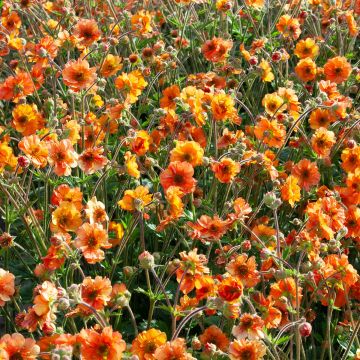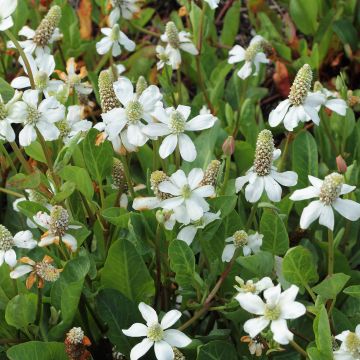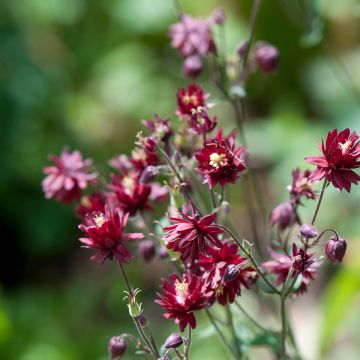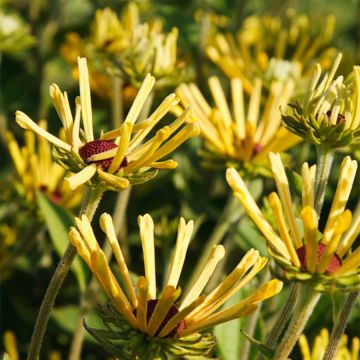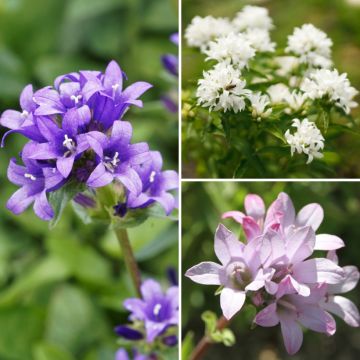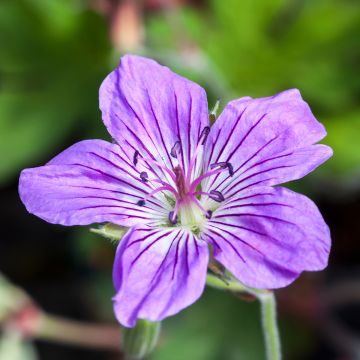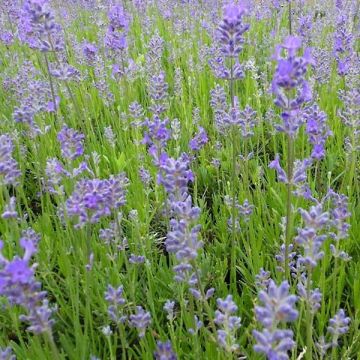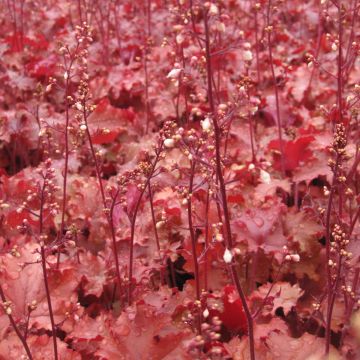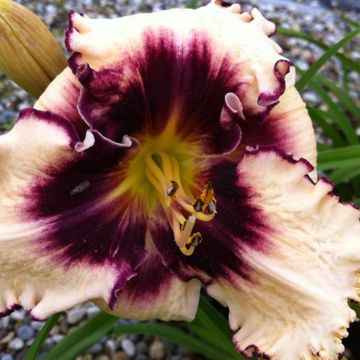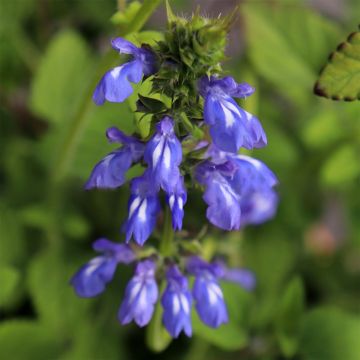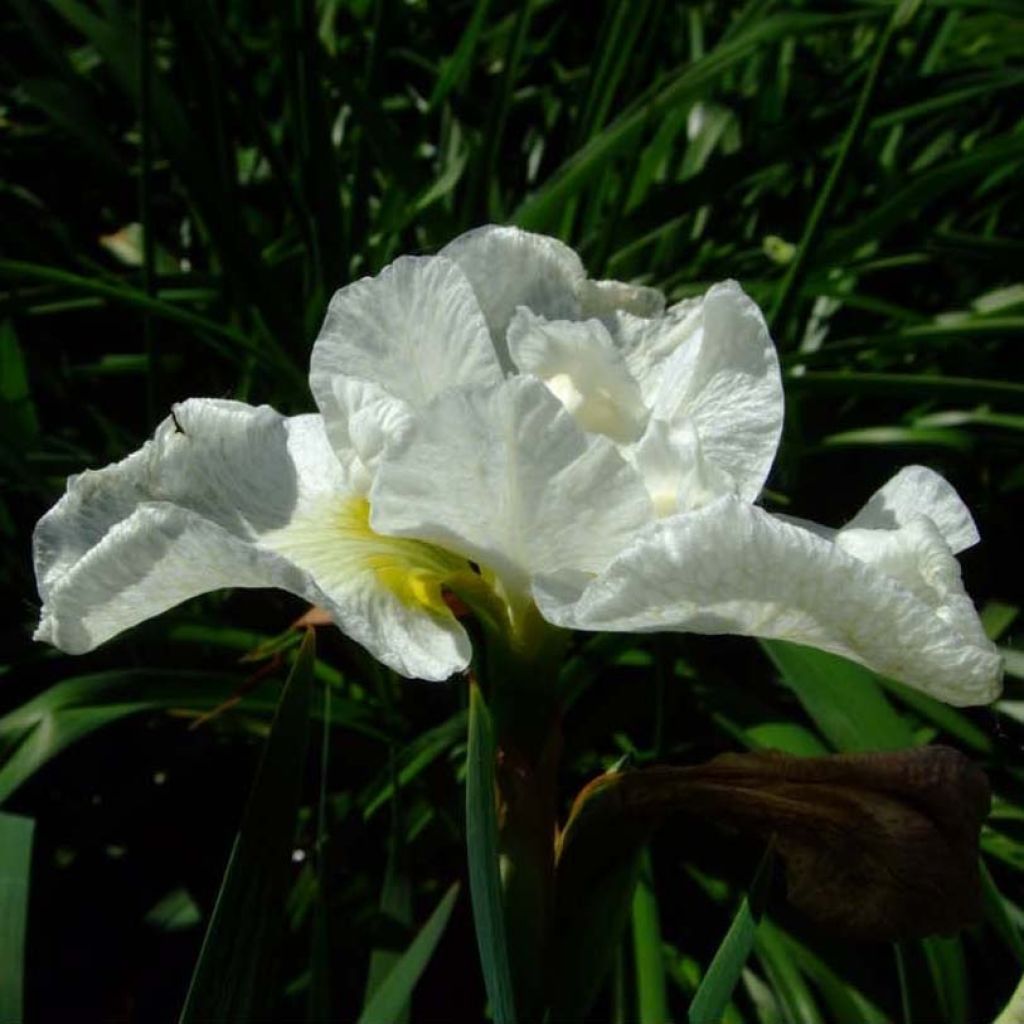

Iris sibirica Harpswell Happiness - Siberian Iris
Iris sibirica Harpswell Happiness - Siberian Iris
Iris sibirica Harpswell Happiness
Siberian Iris, Siberian Flag
This item cannot be shipped to the selected country
Delivery charge from €5.90
More information
Schedule delivery date,
and select date in basket
This plant carries a 12 months recovery warranty
More information
We guarantee the quality of our plants for a full growing cycle, and will replace at our expense any plant that fails to recover under normal climatic and planting conditions.
From €5.90 for pickup delivery and €6.90 for home delivery
Express home delivery from €8.90.
Does this plant fit my garden?
Set up your Plantfit profile →
Description
Iris sibirica 'Harpswell Happiness' is an excellent variety of Siberian iris, compact, floriferous, and bright. The plant bears large swirling flowers during a long period in early summer, with cream-white petals overlying broad white sepals enhanced with green veins, and lemon yellow at the base. Loved for their graceful flowers and their fine, upright foliage in an architectural and vigorous clump, the 'Siberian irises' are very beautiful plants for damp soils, unlike their cousins Iris germanica. They are hardy and adaptable plants, which thrive in good garden soil, moist in summer. Irreplaceable near water features, as long as the roots are not submerged in winter, they are perfect for romantic, English, and even contemporary-style gardens.
The 'Harpswell Happiness' iris is a hybrid horticultural creation introduced by Mc Ewen in 1983 (USA). It is a plant in the Iridaceae family that is included in the group of Siberian irises. Its ancestors originate from Asia, specifically from marshy and sunny areas found in Russia, Mongolia, China, Japan, and Korea. It is a perennial herbaceous plant with a creeping and thick rhizome.
The plant reaches maturity in 4 years and reach a height of 80 cm (32in) when flowering. From spring it forms a dense clump of narrow, linear, upright, medium green leaves. Flowering occurs in June-July. From the clump of leaves, hollow and branched floral stems emerge, slightly taller than the vegetation. Each stem bears many flower buds, 5 to 7 cm (2 to 3in) long and 1 cm (0in) wide. The buds open into flowers with a diameter of 8-10 cm (3-4in), consisting of 3 large pendant sepals with a light lemon yellow base touched with green, surmounted by 3 smaller, erect inner cream-white petals. After pollination by insects, the flowers give way to fruits that are capsules containing seeds.
Siberian-type irises are wonderful plants for landscaping near water features, but they do not like soils that are waterlogged and frozen in winter. The solution may be to plant them in pots that are immersed in spring and taken out in the autumn. In a good garden soil that remains moist throughout the year, enriched with compost, this Iris can be grown without difficulty. Mix them together, combining different colours, or for example with Japanese primroses or feathery astilbes.
Report an error about the product description
Iris sibirica Harpswell Happiness - Siberian Iris in pictures
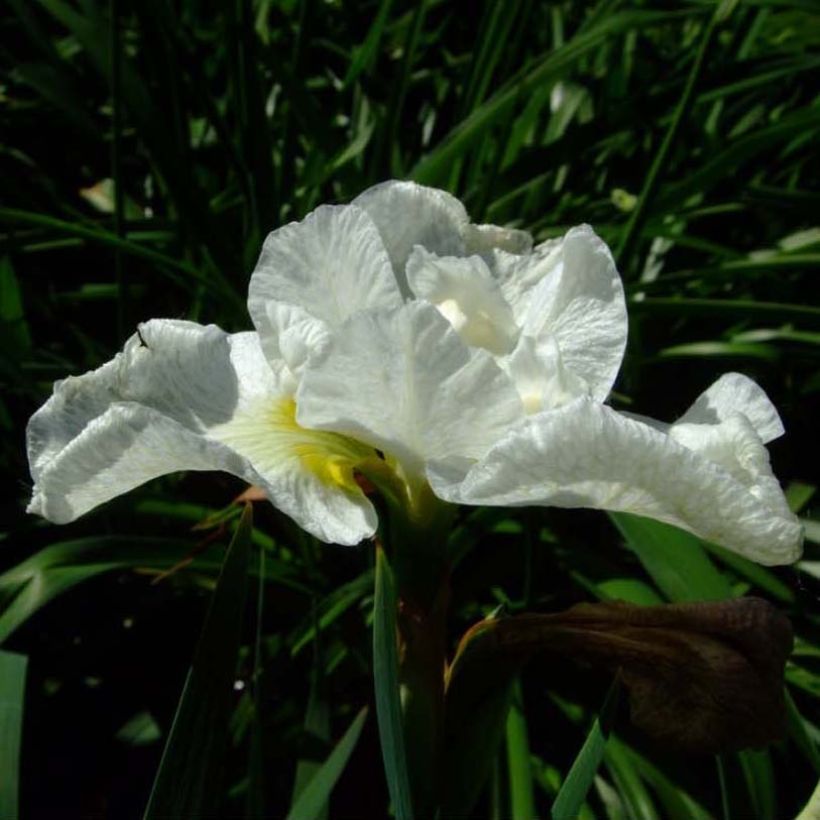

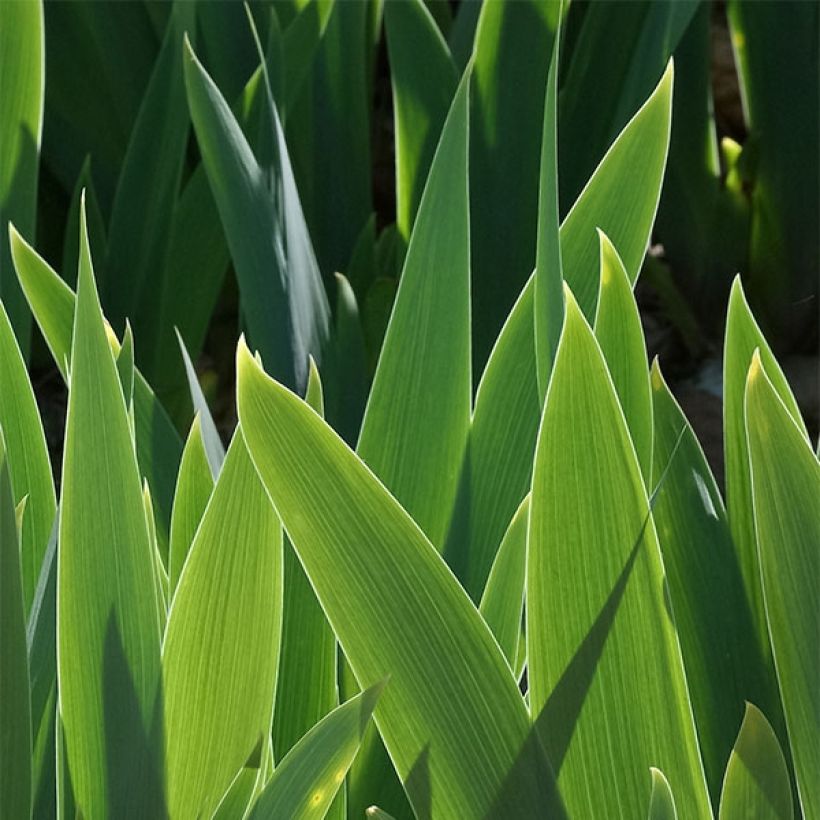

Flowering
Foliage
Plant habit
Botanical data
Iris
sibirica
Harpswell Happiness
Iridaceae
Siberian Iris, Siberian Flag
Cultivar or hybrid
Other Iris A to Z
Planting and care
Plant Siberian Iris in a rich, preferably non-chalky soil (pH 4.5 to 7), clayey and peaty, in a sunny or semi-shaded location. The soil should remain moist even in summer: mulch with compost and water if necessary. Siberian irises do not like soils that are waterlogged and frozen in winter. The solution can be to plant them in a pot that will be submerged in spring and removed in autumn.
Planting period
Intended location
Care
This item has not been reviewed yet - be the first to leave a review about it.
Summer flowering perennials
Haven't found what you were looking for?
Hardiness is the lowest winter temperature a plant can endure without suffering serious damage or even dying. However, hardiness is affected by location (a sheltered area, such as a patio), protection (winter cover) and soil type (hardiness is improved by well-drained soil).

Photo Sharing Terms & Conditions
In order to encourage gardeners to interact and share their experiences, Promesse de fleurs offers various media enabling content to be uploaded onto its Site - in particular via the ‘Photo sharing’ module.
The User agrees to refrain from:
- Posting any content that is illegal, prejudicial, insulting, racist, inciteful to hatred, revisionist, contrary to public decency, that infringes on privacy or on the privacy rights of third parties, in particular the publicity rights of persons and goods, intellectual property rights, or the right to privacy.
- Submitting content on behalf of a third party;
- Impersonate the identity of a third party and/or publish any personal information about a third party;
In general, the User undertakes to refrain from any unethical behaviour.
All Content (in particular text, comments, files, images, photos, videos, creative works, etc.), which may be subject to property or intellectual property rights, image or other private rights, shall remain the property of the User, subject to the limited rights granted by the terms of the licence granted by Promesse de fleurs as stated below. Users are at liberty to publish or not to publish such Content on the Site, notably via the ‘Photo Sharing’ facility, and accept that this Content shall be made public and freely accessible, notably on the Internet.
Users further acknowledge, undertake to have ,and guarantee that they hold all necessary rights and permissions to publish such material on the Site, in particular with regard to the legislation in force pertaining to any privacy, property, intellectual property, image, or contractual rights, or rights of any other nature. By publishing such Content on the Site, Users acknowledge accepting full liability as publishers of the Content within the meaning of the law, and grant Promesse de fleurs, free of charge, an inclusive, worldwide licence for the said Content for the entire duration of its publication, including all reproduction, representation, up/downloading, displaying, performing, transmission, and storage rights.
Users also grant permission for their name to be linked to the Content and accept that this link may not always be made available.
By engaging in posting material, Users consent to their Content becoming automatically accessible on the Internet, in particular on other sites and/or blogs and/or web pages of the Promesse de fleurs site, including in particular social pages and the Promesse de fleurs catalogue.
Users may secure the removal of entrusted content free of charge by issuing a simple request via our contact form.
The flowering period indicated on our website applies to countries and regions located in USDA zone 8 (France, the United Kingdom, Ireland, the Netherlands, etc.)
It will vary according to where you live:
- In zones 9 to 10 (Italy, Spain, Greece, etc.), flowering will occur about 2 to 4 weeks earlier.
- In zones 6 to 7 (Germany, Poland, Slovenia, and lower mountainous regions), flowering will be delayed by 2 to 3 weeks.
- In zone 5 (Central Europe, Scandinavia), blooming will be delayed by 3 to 5 weeks.
In temperate climates, pruning of spring-flowering shrubs (forsythia, spireas, etc.) should be done just after flowering.
Pruning of summer-flowering shrubs (Indian Lilac, Perovskia, etc.) can be done in winter or spring.
In cold regions as well as with frost-sensitive plants, avoid pruning too early when severe frosts may still occur.
The planting period indicated on our website applies to countries and regions located in USDA zone 8 (France, United Kingdom, Ireland, Netherlands).
It will vary according to where you live:
- In Mediterranean zones (Marseille, Madrid, Milan, etc.), autumn and winter are the best planting periods.
- In continental zones (Strasbourg, Munich, Vienna, etc.), delay planting by 2 to 3 weeks in spring and bring it forward by 2 to 4 weeks in autumn.
- In mountainous regions (the Alps, Pyrenees, Carpathians, etc.), it is best to plant in late spring (May-June) or late summer (August-September).
The harvesting period indicated on our website applies to countries and regions in USDA zone 8 (France, England, Ireland, the Netherlands).
In colder areas (Scandinavia, Poland, Austria...) fruit and vegetable harvests are likely to be delayed by 3-4 weeks.
In warmer areas (Italy, Spain, Greece, etc.), harvesting will probably take place earlier, depending on weather conditions.
The sowing periods indicated on our website apply to countries and regions within USDA Zone 8 (France, UK, Ireland, Netherlands).
In colder areas (Scandinavia, Poland, Austria...), delay any outdoor sowing by 3-4 weeks, or sow under glass.
In warmer climes (Italy, Spain, Greece, etc.), bring outdoor sowing forward by a few weeks.

































